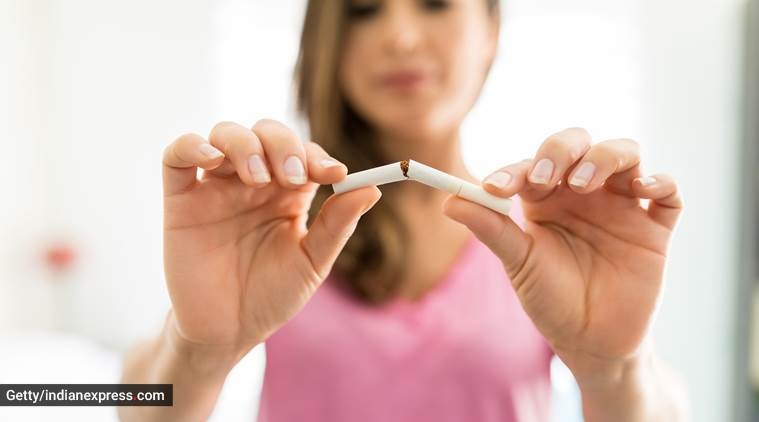 Here’s how secondhand smoke is dangerous for you. (Source: Getty Images/Thinkstock)
Here’s how secondhand smoke is dangerous for you. (Source: Getty Images/Thinkstock)
Tobacco smoke has many harmful substances like benzopyrene, lead, carbon monoxide arsenic and formaldehyde. Smoking is injurious to health as we all know and read daily about it. There are so many people who acknowledge this fact and have chosen not to smoke as a priority in their life. But still they get exposed to tobacco smoke through other people smoking in their close vicinity without realising that they are harming others including their friends, family members and children, mentioned Dr Udgeath Dhir, director and head, CTVS, Fortis Memorial Research Institute, Gurugram. This is what we call Secondhand smoke (SHS). When non-smokers are exposed to SHS it is called passive smoking.
is a mixture of two forms of smoke that come from burning tobacco namely the mainstream smoke which is the smoke exhaled by a smoker and the sidestream smoke which from the lighted end of a cigarette or cigar. This type of smoke has higher concentrations of cancer-causing agents and is more toxic than mainstream smoke as there is no filter it must pass through. It also has smaller particles than mainstream smoke.
ALSO READ | WHO says smoking linked to higher risk of virus
All those people who do not smoke, breathe in SHS and they take in nicotine and toxic chemicals the same way smokers do. The more the exposure, the higher the levels of these harmful chemicals in your body. There is no defined safe level of exposure for secondhand
smoke.
Secondhand smoke can affect a passive smoker in many ways. It may increase the risk of heart attack and stroke by causing stiffening of arteries. It increases the buildup of fat deposits in blood vessels. Smoking in itself is classified as a pro-coagulant state. Chances of having lung cancer and lung diseases like emphysema, asthma, and chronic bronchitis are increased in people with SHS exposure. Among other possibilities are breast cancer, lymphoma and leukemia. It may also cause mental and emotional changes and some studies have shown that exposure to SHS is linked to symptoms of depression. Children are most affected by SHS as they are more vulnerable and less likely to avoid it. These children have more chances of having respiratory infections like bronchitis. Asthmatic attacks are more likely to get precipitated in such children. Along with that, irritation in eyes and middle ear infections may also occur due to SHS exposure.
Some of the indirect but equally important problems include medical expenses, doctor visits, and lost work time. What are the problem areas where SHS is most likely to cause concern. While it may occur anywhere, public places especially the crowded ones are special areas of concern. Strict enforcement of laws to prevent people from smoking in public places and public transport should be done by the government. Smoking in cars can be hazardous for fellow traveller as it is small confined space and toxins can be inhaled even if windows are open or the air-conditioner is on. Workplaces where smoking is allowed should have separate smoking zones. Employees should be encouraged to quit smoking.
The way to protect the non-smokers from secondhand smoke is by prohibiting smoking in an indoor space or building as ventilating the buildings or cleaning them cannot keep non-smokers from being exposed to SHS.